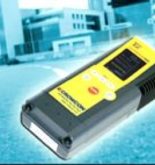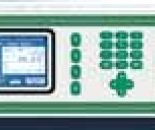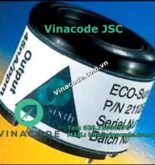Some electrochemical sensors have to be operated with a bias voltage, which has the distinct disadvantage that the
baseline increases substantially with temperatures above 25°C. The HCl-sensors from Membrapor (Switzerland)
measure hydrogen chloride without biasing and show, additionally to the good baseline stability, no cross-interference
to SO2 or NO2. Due to recent efforts, the response time could be reduced down to t90 < 40 s.
Also the NH3-sensors do not need a bias-voltage and show an exceptionally low response time. At the Sensor + Test 2007, it was shown
that the NH3/MR-100 was able to detect 1 ppm ammonia, which makes it perfectly suitable for fast leak detection with portable instruments.
An even lower detection limit is required by phosphine, which is a hazardous gas with a very low TLV-value of 0.1 ppm. In order to monitor
this gas, a highly sensitive sensor is needed. With an output signal of 4’000 nA/ppm and t90 < 25 s, the selective PH3/C-5 sensor is the best
choice for this application. It is a major task to achieve a high selectivity, but also to keep the range in cross-sensitivity to an interference gas as low as possible. A new process technology has lead to hydrogen sensors which fulfil these tasks without exception. The H2/CA-1000 has a CO-interference between 0.1 % and 2.0%, which makes this H2-sensor unique, as are many other sensors from Membrapor.
baseline increases substantially with temperatures above 25°C. The HCl-sensors from Membrapor (Switzerland)
measure hydrogen chloride without biasing and show, additionally to the good baseline stability, no cross-interference
to SO2 or NO2. Due to recent efforts, the response time could be reduced down to t90 < 40 s.
Also the NH3-sensors do not need a bias-voltage and show an exceptionally low response time. At the Sensor + Test 2007, it was shown
that the NH3/MR-100 was able to detect 1 ppm ammonia, which makes it perfectly suitable for fast leak detection with portable instruments.
An even lower detection limit is required by phosphine, which is a hazardous gas with a very low TLV-value of 0.1 ppm. In order to monitor
this gas, a highly sensitive sensor is needed. With an output signal of 4’000 nA/ppm and t90 < 25 s, the selective PH3/C-5 sensor is the best
choice for this application. It is a major task to achieve a high selectivity, but also to keep the range in cross-sensitivity to an interference gas as low as possible. A new process technology has lead to hydrogen sensors which fulfil these tasks without exception. The H2/CA-1000 has a CO-interference between 0.1 % and 2.0%, which makes this H2-sensor unique, as are many other sensors from Membrapor.



